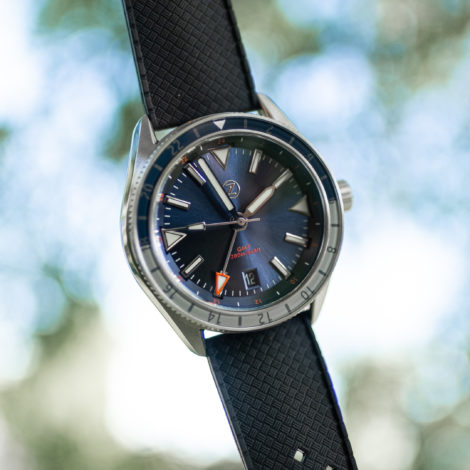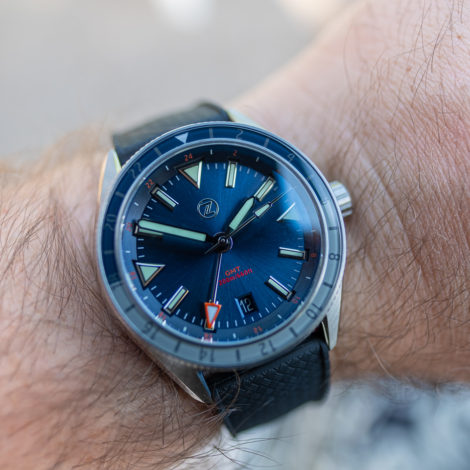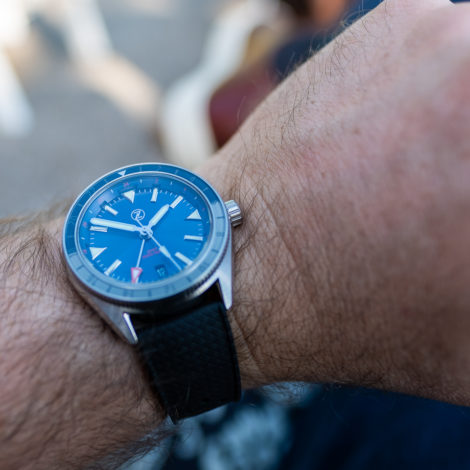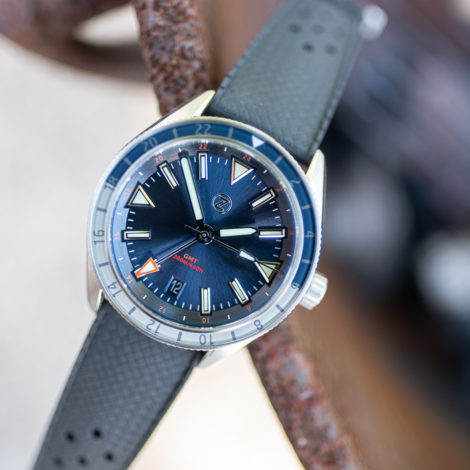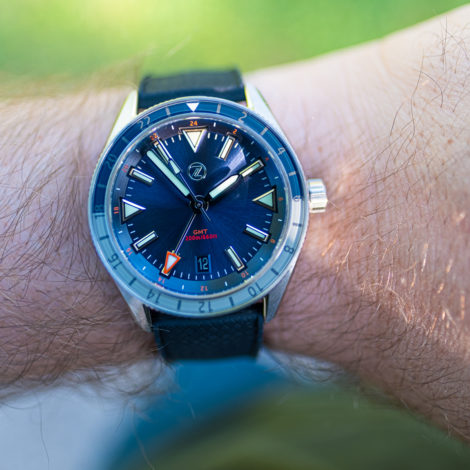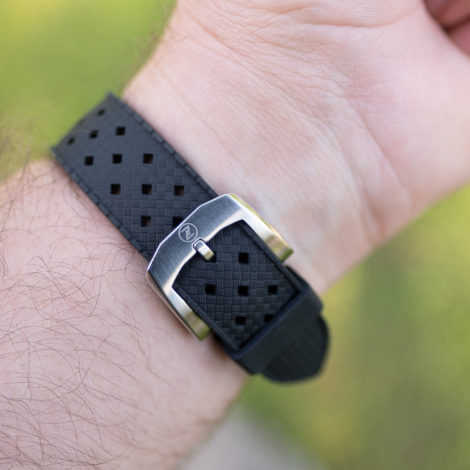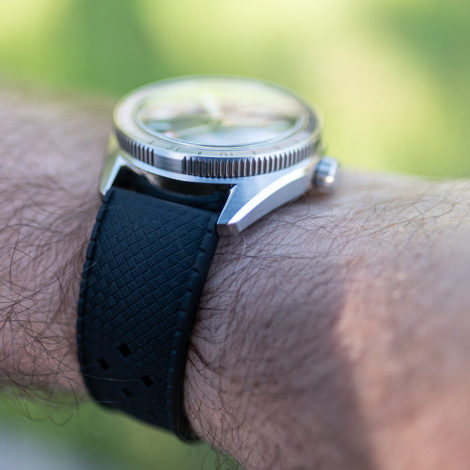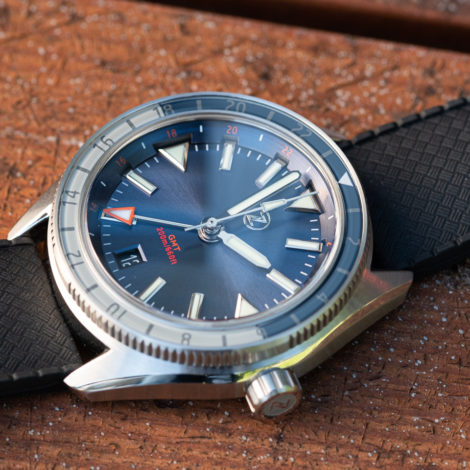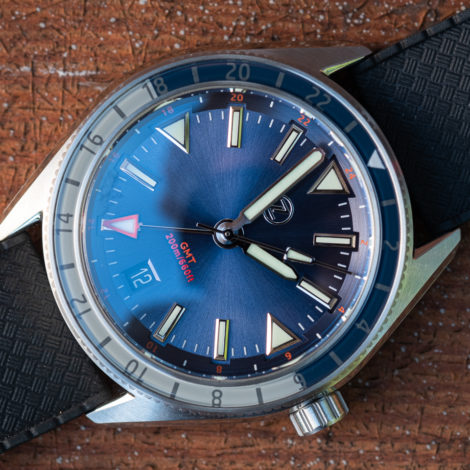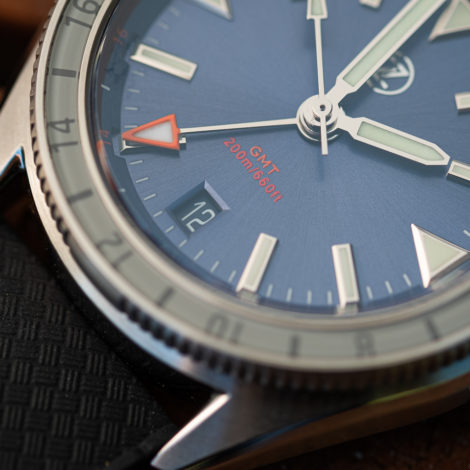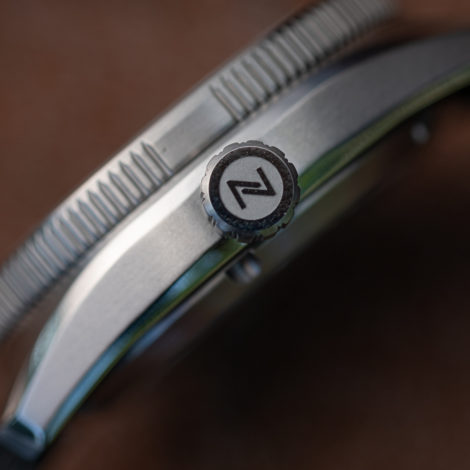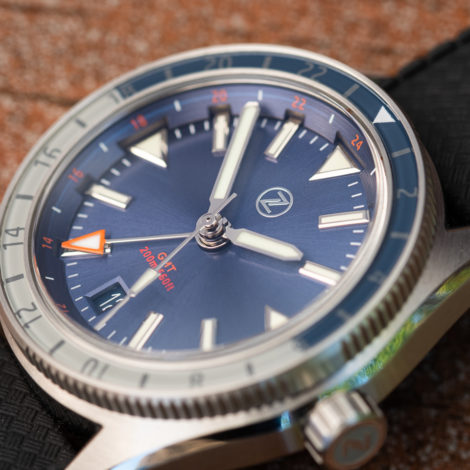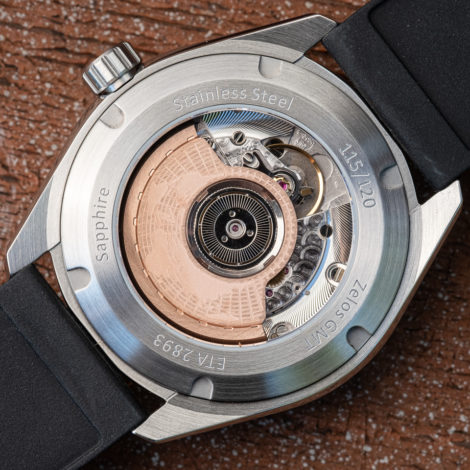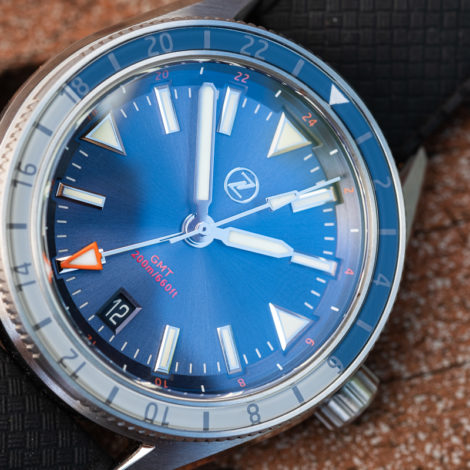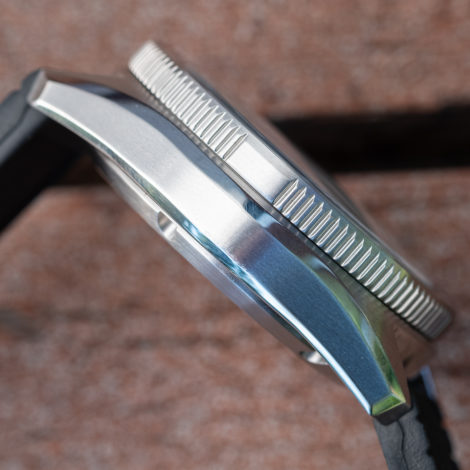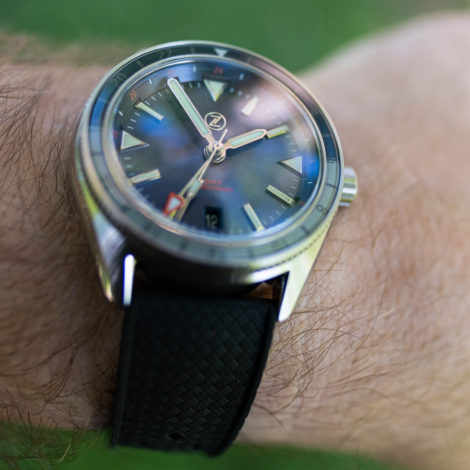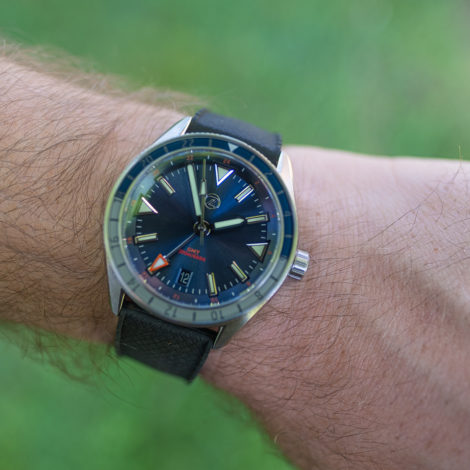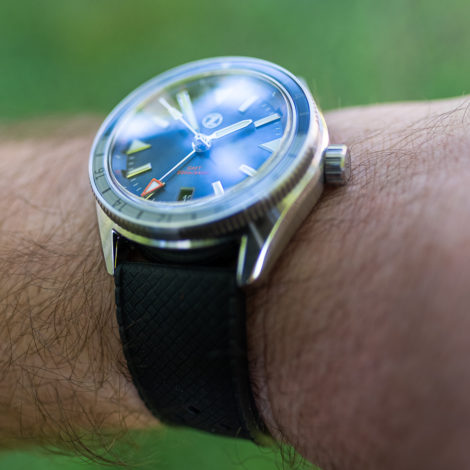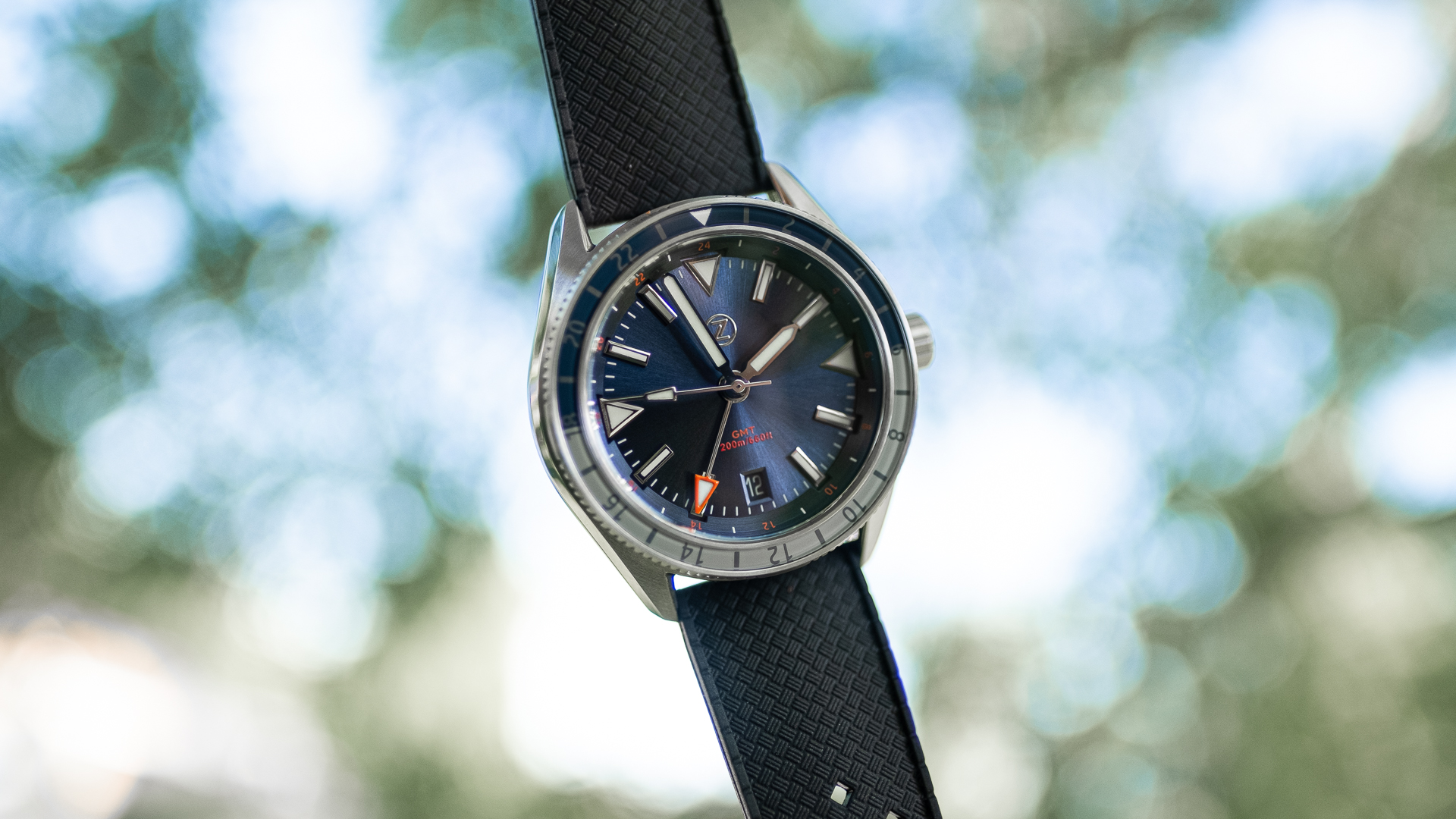
It’s been a solid year since I last checked in with Zelos Watches. In that time the brand has released several new models, including the really slick-looking Skyraider pilot watch and the classic ZX series chronographs. One of the things Zelos consistently gets right is the amount of quirk and flare they put into their releases. When I reviewed the Mako 500m Diver, I was struck by how unique it was, while retaining some traditional dive watch characteristics. Taking the next logical step in model development, Zelos has released the Horizon GMT, a very traditional two-time-zone watch (or three with the bezel) that, in typical Zelos fashion, takes advantage of high-end materials and a high-grade ETA movement at a very reasonable price point.
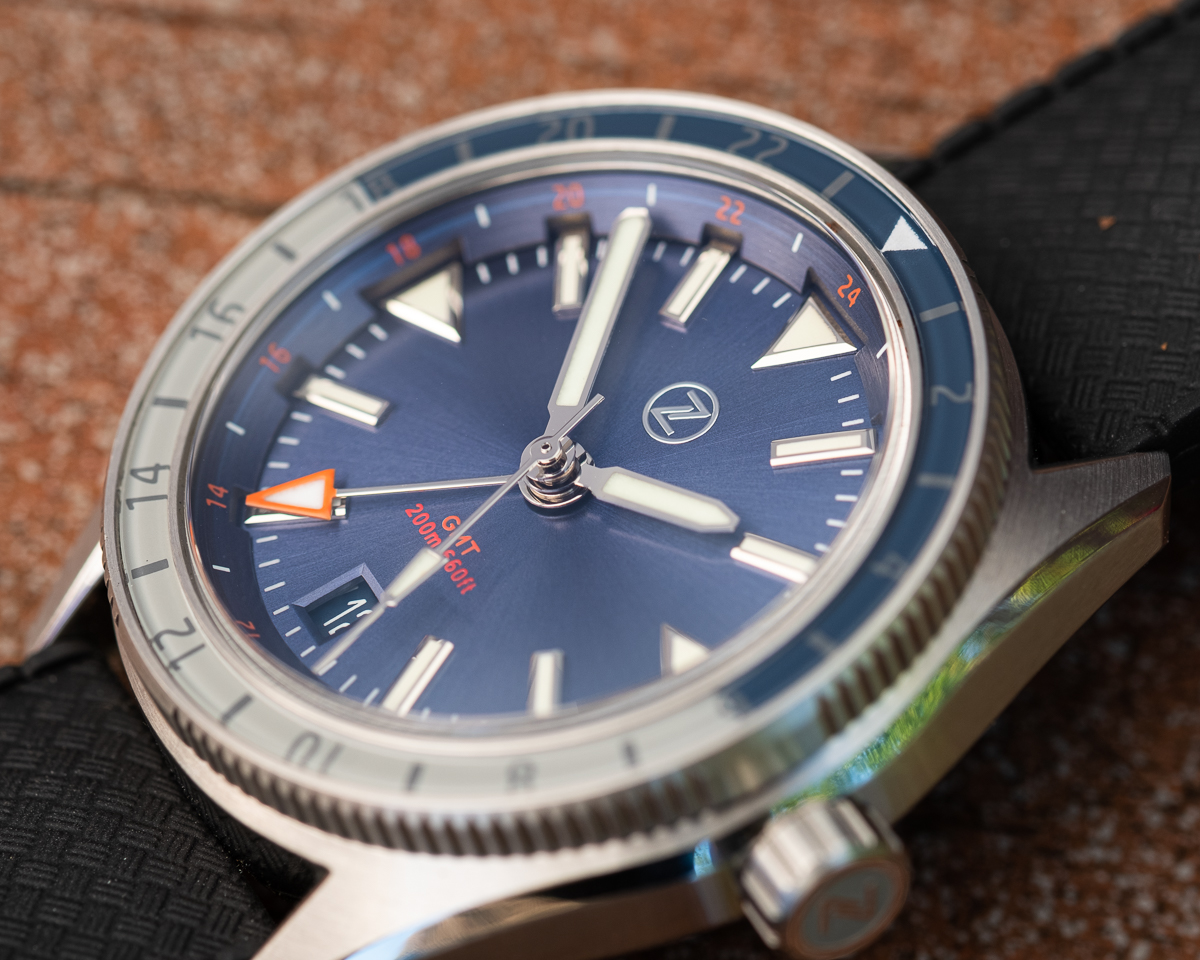
GMT watches are in vogue right now — the romantic idea of strapping on your faithful travel watch and never losing track of what time it is at home while you’re on (insert epic adventure here) appeals to everyone. Some practical considerations come into play with a watch like this, but we’ll get into that later. Suffice it to say that Zelos took a good swing at the idea, and while I’m not sure I’d call the Horizon a home run, it certainly got some men on the bases (if you’ll allow me a clumsy sports metaphor).
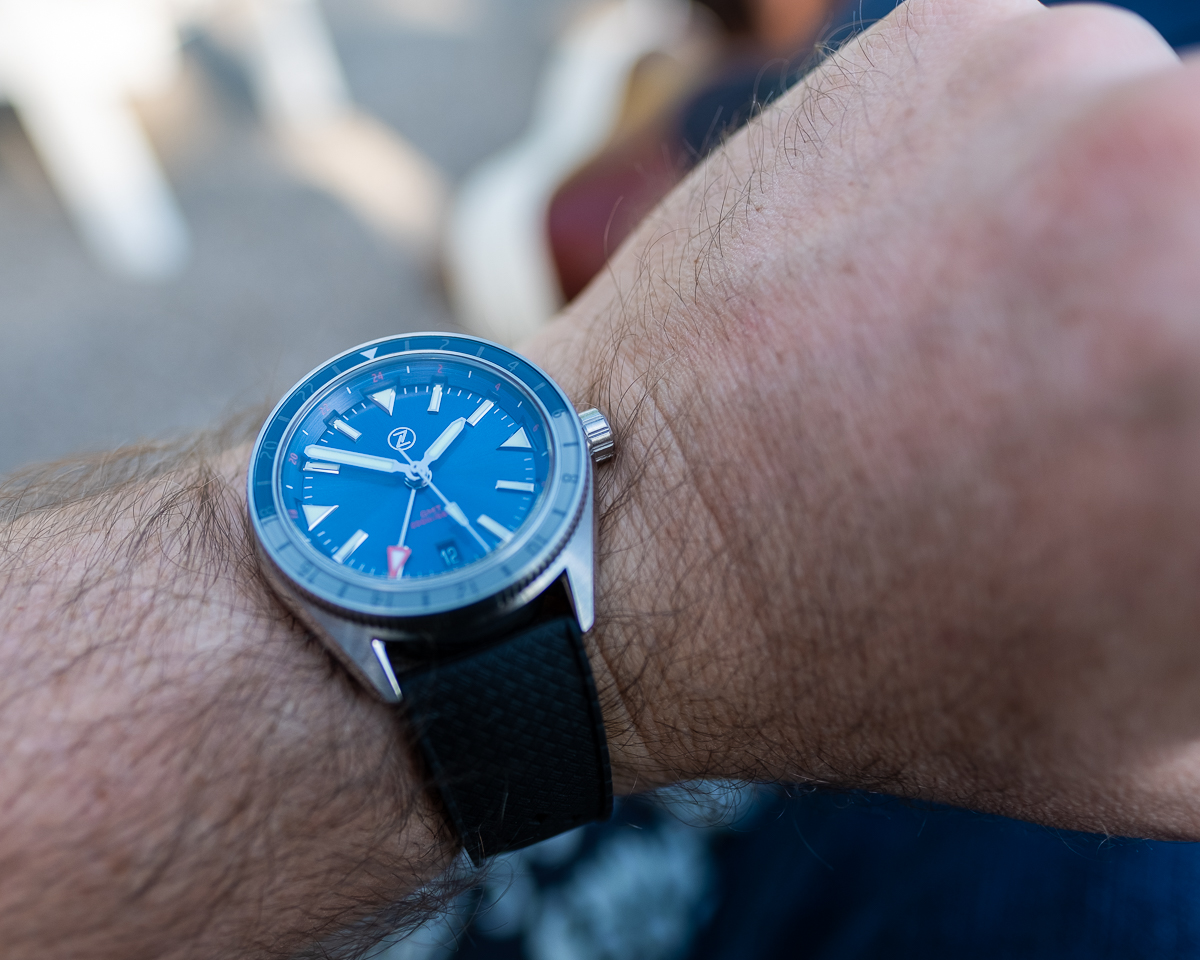
Fit
It always seems like such a cop-out to say that whatever watch I’m currently looking at “wears nicely on the wrist,” but sometimes there’s just no other way to put it. Zelos designed the Horizon with very classic dimensions. The 40mm case with a 12mm overall thickness couldn’t be more in my sweet spot. (If anything, it wears a touch on the small side.) The lugs have a slight downward angle, allowing the watch to wrap around your wrist and, at 45mm, it sits proportionately on my roughly 7” wrist.
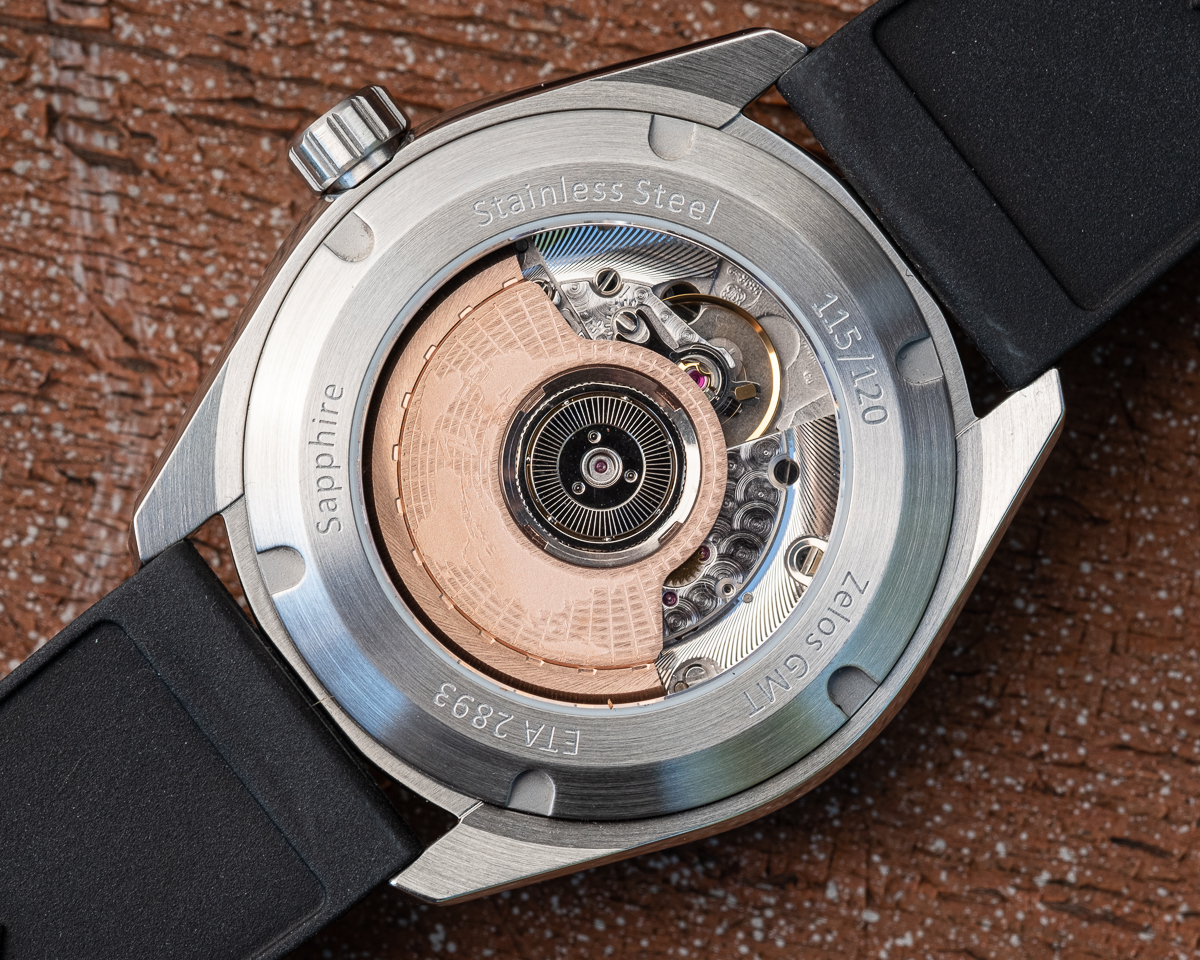
Movement
The Zelos Horizon uses the expected ETA 2893 Elaboré, the most common GMT movement you see used by manufacturers that don’t make their movements in-house. For daily use, this is a great movement, but it has one major drawback: The 2893 features a jumping 24-hour hand instead of a quick-adjusting local hour. What this translates into for the end user is that, when you move to a different time zone, you have to essentially reset the entire watch instead of just adjusting the local hour.
This isn’t as much of a Zelos issue as it is a lack of movement availability. If ETA or Selitta wanted to do something really cool, they could produce a mass-market jumping local-hour-hand GMT movement. Just my two cents.
One nice detail is the sapphire display back. Zelos has modified the rotor with a laser-engraved motif of the world map and rose-gold plating. These little tweaks really make the movement pop when you flip the watch over.
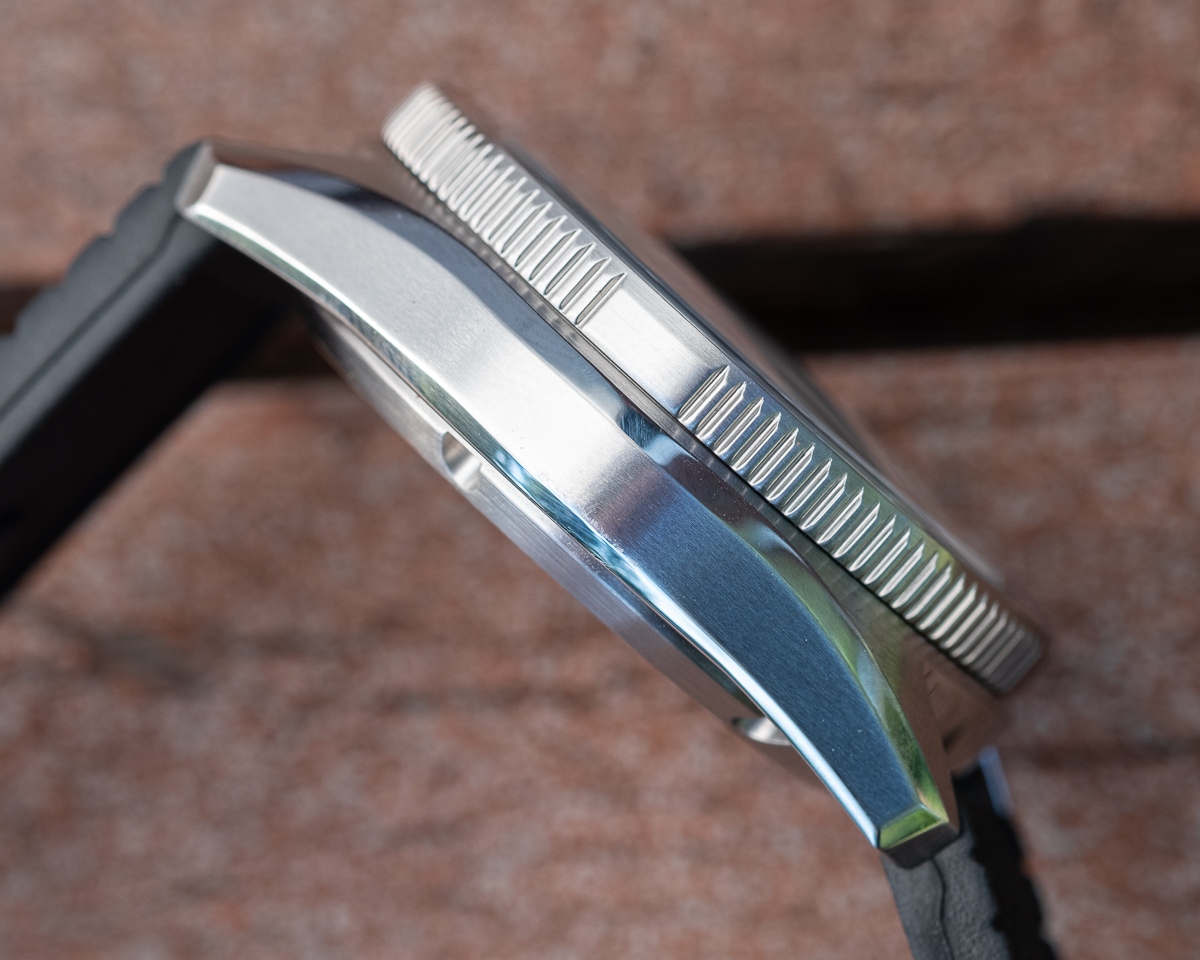
Case
Oftentimes, with watches that come from independent manufacturers, there’s some give and take when it comes to fine details. Having had the opportunity to handle many watches in this price point, I generally know what I can expect to see — especially when it comes down to the surface finishes on the cases. Zelos, on the other hand, pleasantly surprised me. The case has some nicely applied brushing along the sides and on the tops of the lugs but what really stands out to me is the sharply polished bevel as you transition from case side to the top or bottom.
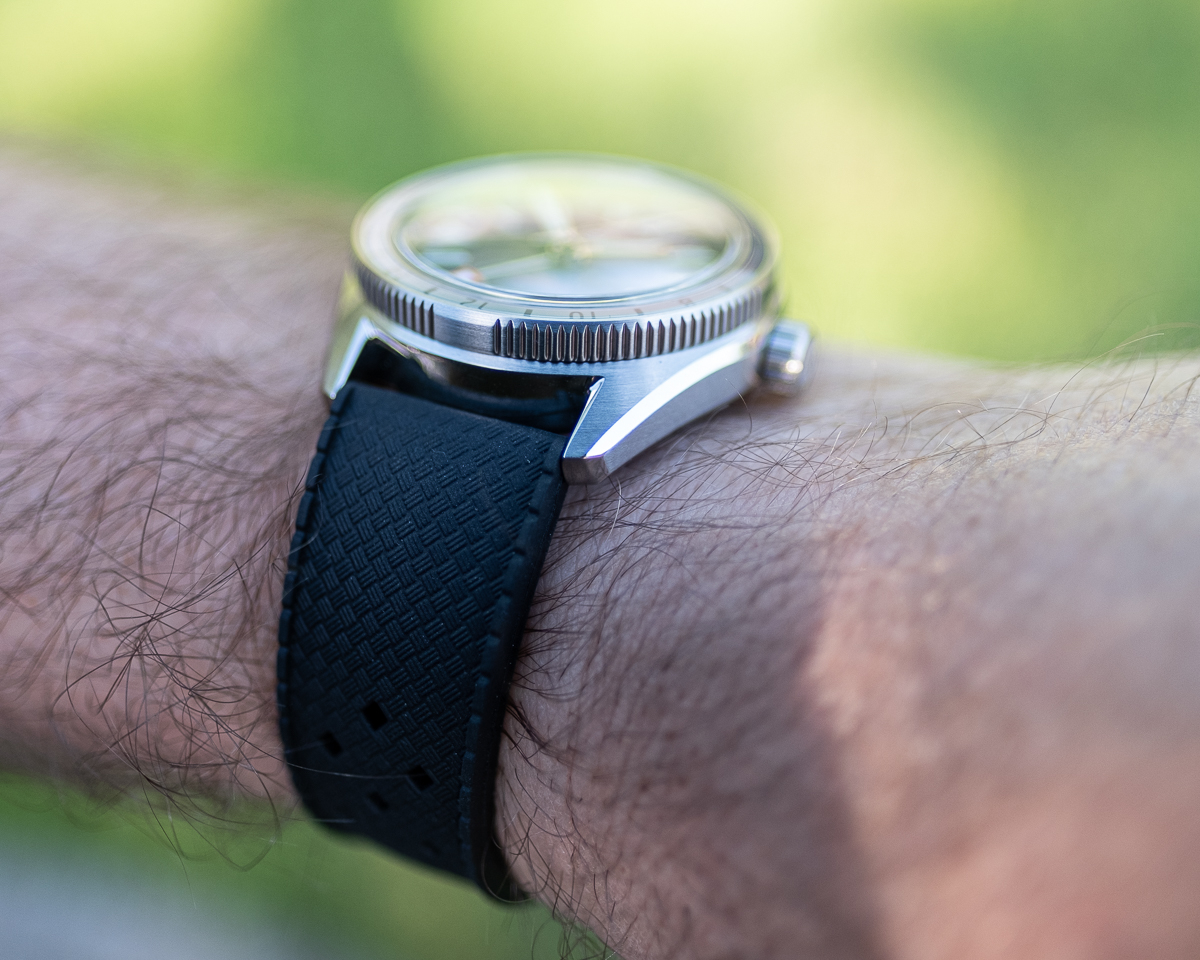
Zelos opted for a roughly 6mm signed crown. It’s tastefully done with contrasting finishes between the edges, the logo, and the margin. There are some excellent ridges along the crown’s edges that let you get a decent purchase when manipulating it.
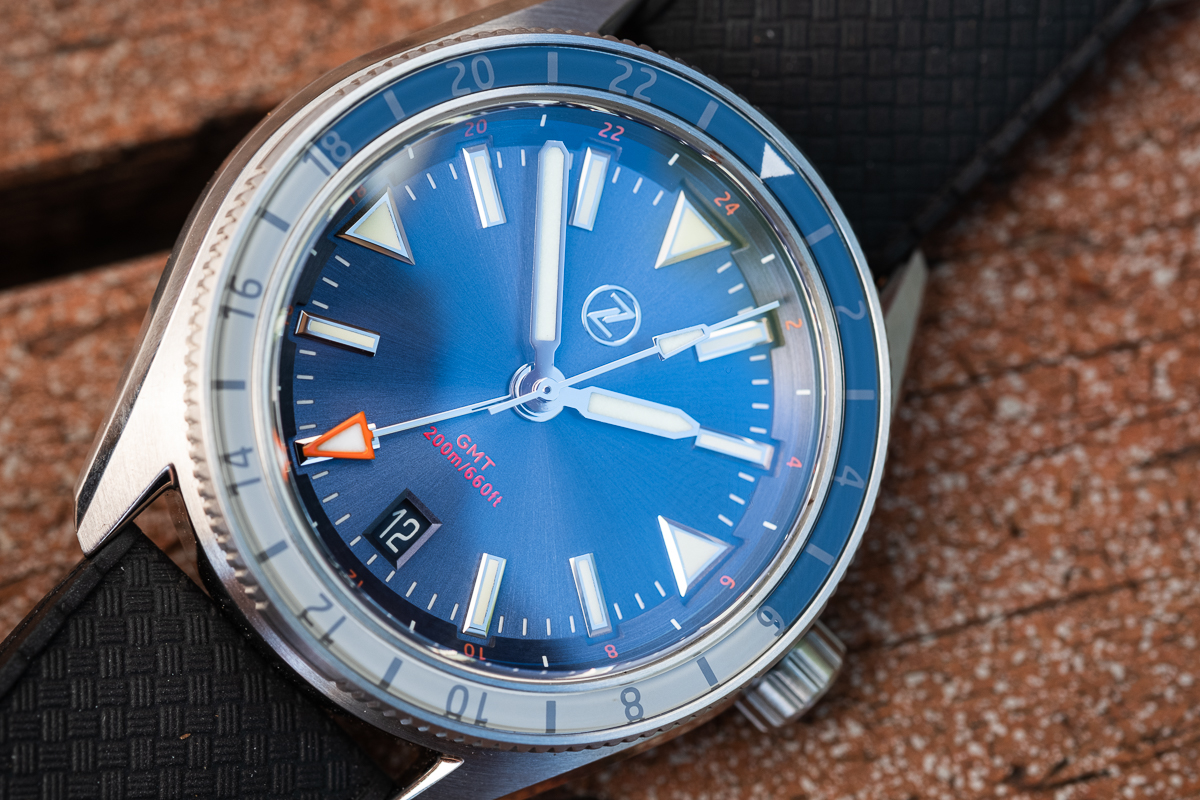
The bezel, as one would expect on a GMT, is a bi-directional 24-hour bezel. According to Zelos, there are two different versions available, depending on which color you order. The one I have has a sapphire insert, but Zelos also offers a ceramic bezel on other versions. The action has an excellent positive click in both directions and little-to-no play. The pip at the 24-hour mark is lumed, however, the rest of the bezel is not. I personally would have preferred to see it completely lumed.
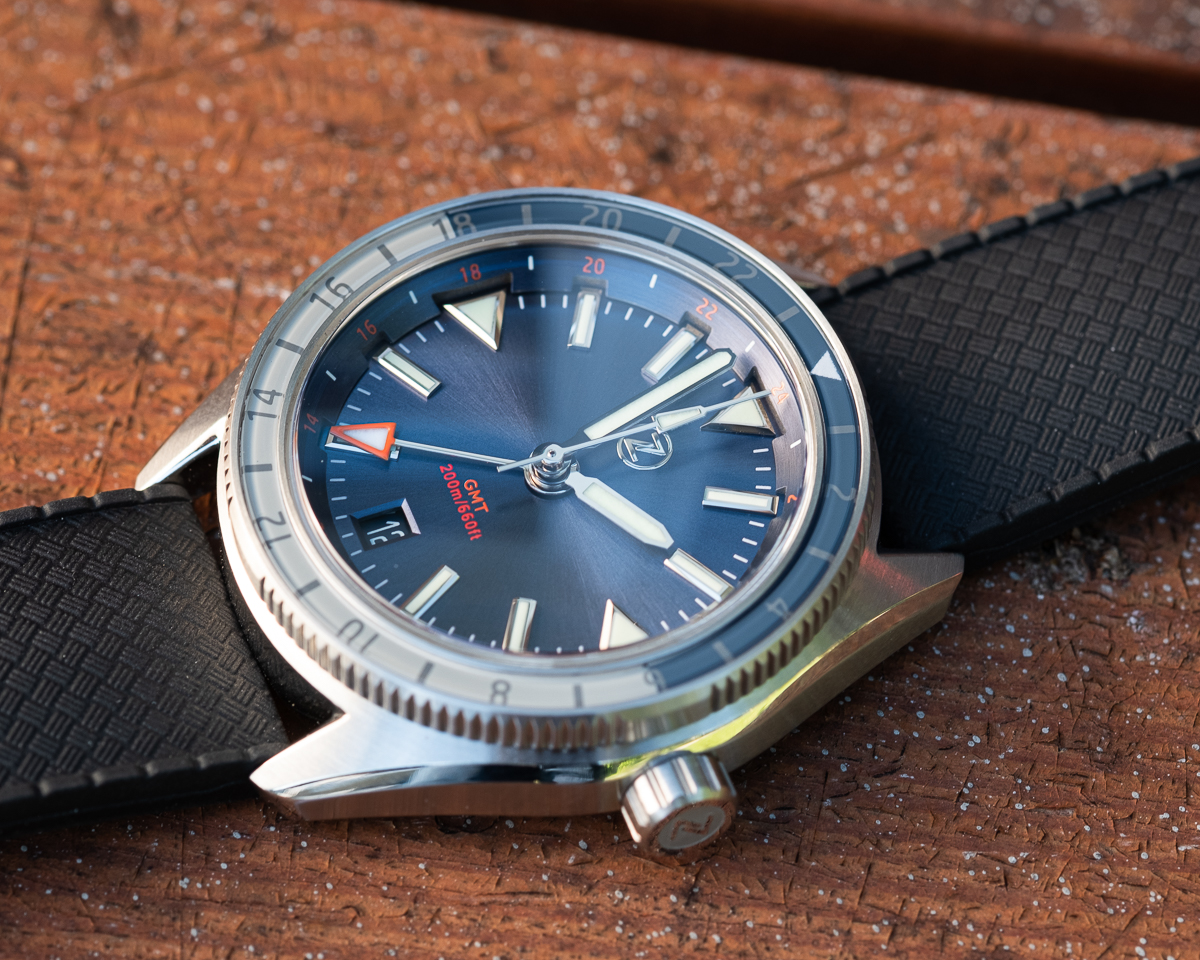
Dial
There are several different dial versions of the Horizon GMT; the particular iteration I was able to test has a blue sunburst dial that catches the light quite nicely. The applied-hour indices are set into the chapter ring, giving the dial a compelling sense of depth. The indices themselves are applied, and lume-filled batons are broken up by triangle indices at 12, 3, and 9 o’clock. The date sits at 6 o’clock, and white text on the date wheel matches the dial.
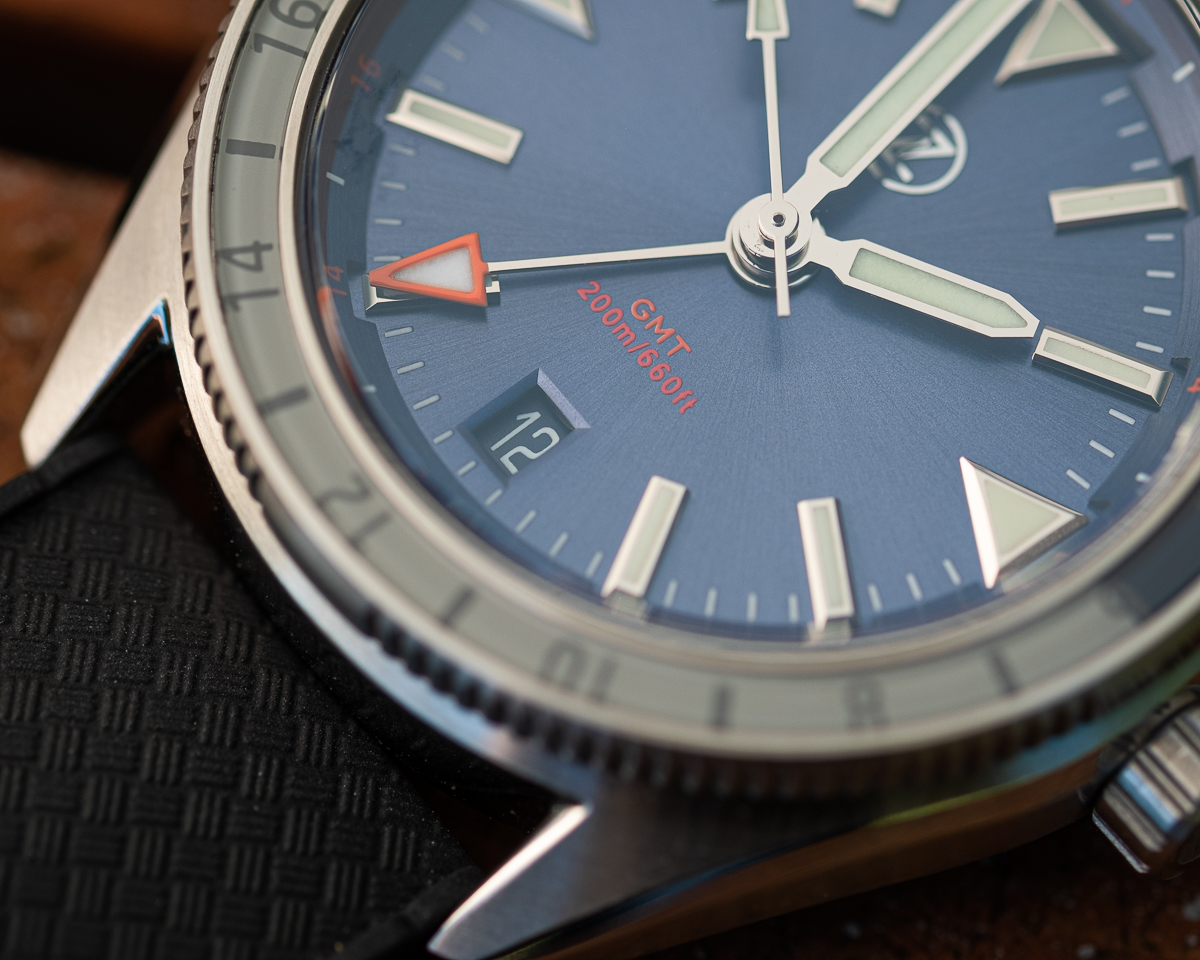
The handset is a polished play on baton hands. It’s what I would imagine you’d get if you took some simple batons and then beveled the edges. The GMT hand is tipped with an orange arrow pointer that is very clear and easily readable. All of the hands are filled with green Super-LumiNova. It’s not the brightest lume I’ve ever experienced, but it does what it’s supposed to.
Other models from Zelos have suffered from being a little busy on the dial, but they really tamed this one down. It’s highly readable, and the GMT hand jumps right off the blue background. I wish the text on the 24-hour bezel were a little crisper, but that’s a minor gripe.
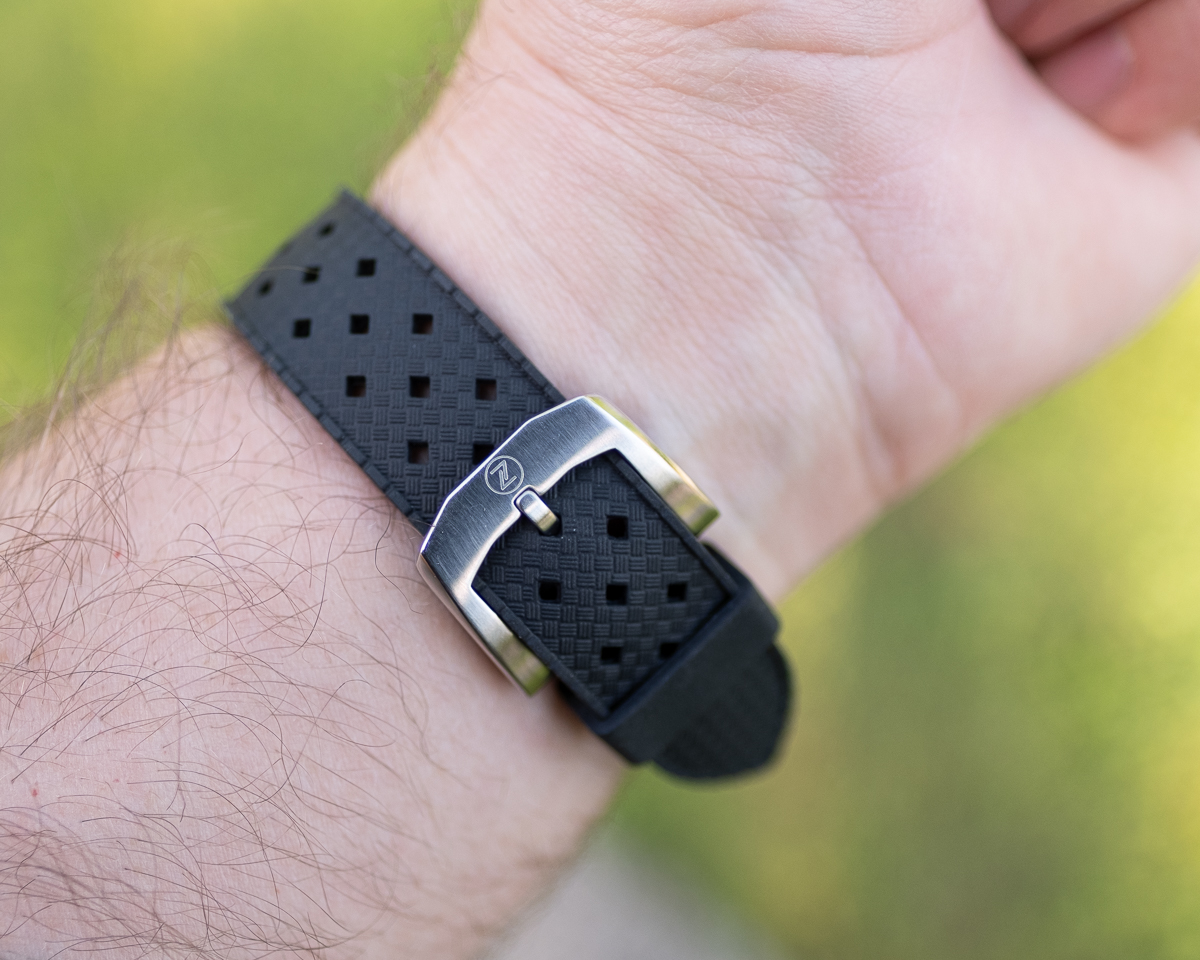
Straps
The Zelos Horizon GMT comes with two strap options; a tropic rubber strap and a Horween leather strap. The tropic strap comes with a substantial signed Zelos buckle. One thing I remember from my time with the Mako was that the signed buckle was really nicely executed. The leather strap comes with quick-release spring bars and a simpler buckle.
The leather strap itself is not particularly well made, but it’s pretty apparent that the rubber is the strap the Horizon is meant to be worn on. It’s very nicely executed, comfortable, and substantial. More importantly, it seems to complement the overall aesthetic of the watch itself. I also suspect this piece would wear nicely on a single-layer NATO.
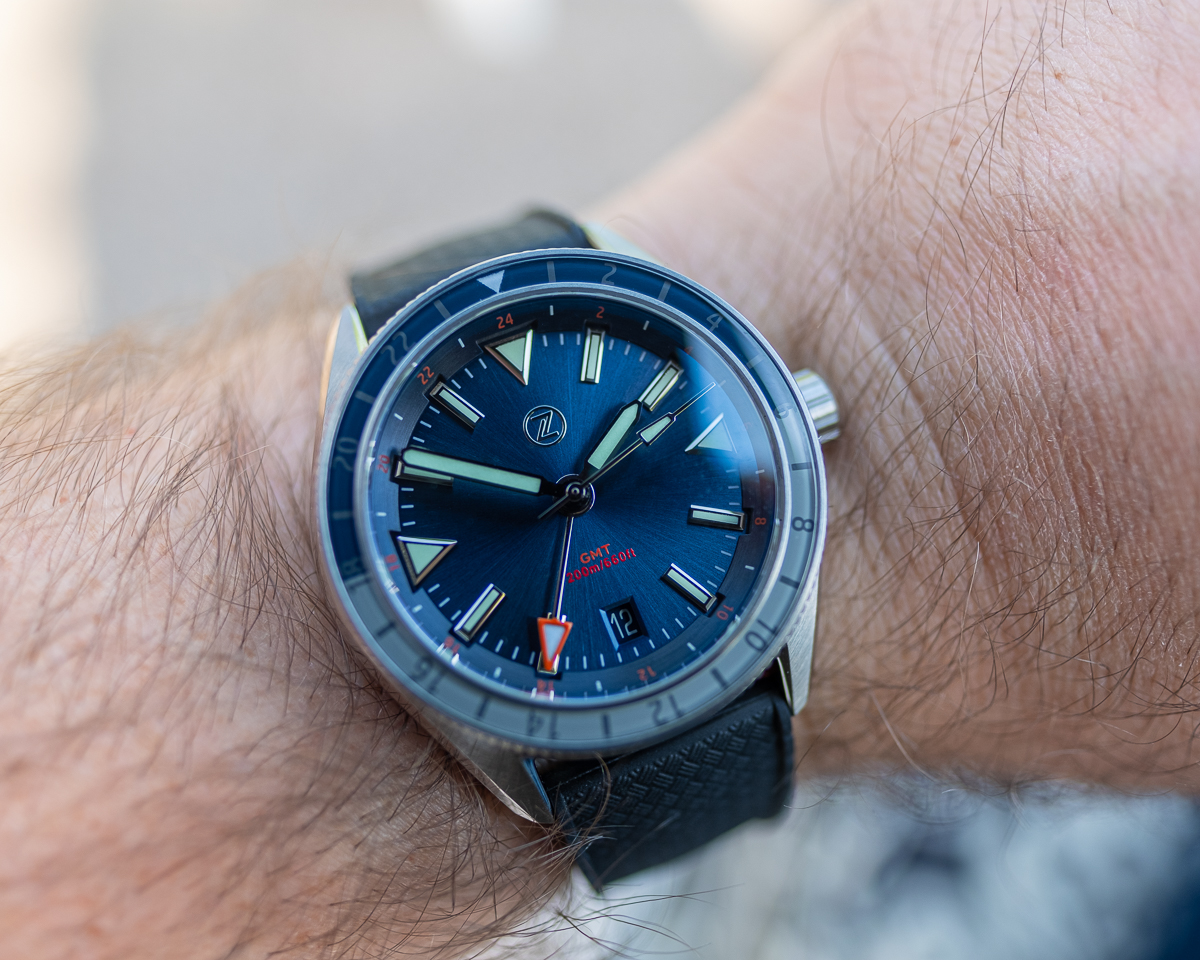
Conclusion
When it’s all said and done, I think Zelos has come up with a real value-conscious GMT option here for its lineup. While it’s not perfect, I believe some of the compromises made were in the spirit of keeping the watch at or below a specific price point. Some of the competitive options that come to mind are:
The Monta Skyquest or Atlas at $1,925 and $1,615 respectively; they are equipped with similar movements and functions at a much higher cost. Now, they are available on steel bracelets, and Monta is known for its extremely high degree of finishing, so there’s a tradeoff here for the price.
Another good option would be the Alpina Startimer Pilot Heritage at $1,395. Alpina has used a local jumping hour GMT mechanism, which allows for more accurate use of the GMT movement, but the design itself is polarizing, so you’ll have to decide which one you prefer for yourself.
Lastly, you could always look at the Farer GMTs, again priced higher at $1,425; they use the same ETA movement and offer some really fun colorways.
Currently, the Zelos Horizon GMT is priced at $649 and comes with two strap options. Zelos has an interesting pricing model wherein the watches get more expensive as time passes until they sell out. The Horizon is slated to increase to $849 on May 19th; while that’s a stiff increase, it still leaves it handily under the competition. I wish there were a movement alternative to the ETA 2893 with the independently adjusting GMT hands, but these are exceptionally well made. They look great, in my opinion, and Zelos as a company really stands behind its work. I’ve spent some time in the Facebook group “Zelos Timekeepers,” and the owner, Elshan Tang, is very active with members and answers questions. It’s refreshing to see a brand owner taking an active role with his customers. For more information and current availability, head on over to zeloswatches.com.
Necessary Data
>Brand: Zelos
>Model: Horizon GMT
>Price: $649
>Size: 40mm
>Would reviewer personally wear it: Yes, and I have been!
>Friend we’d recommend it to first: This would be a great first GMT.
>Best characteristic of watch: Price-to-quality ratio.
>Worst characteristic of watch: I think the printing on the bezel could be done a little better.

